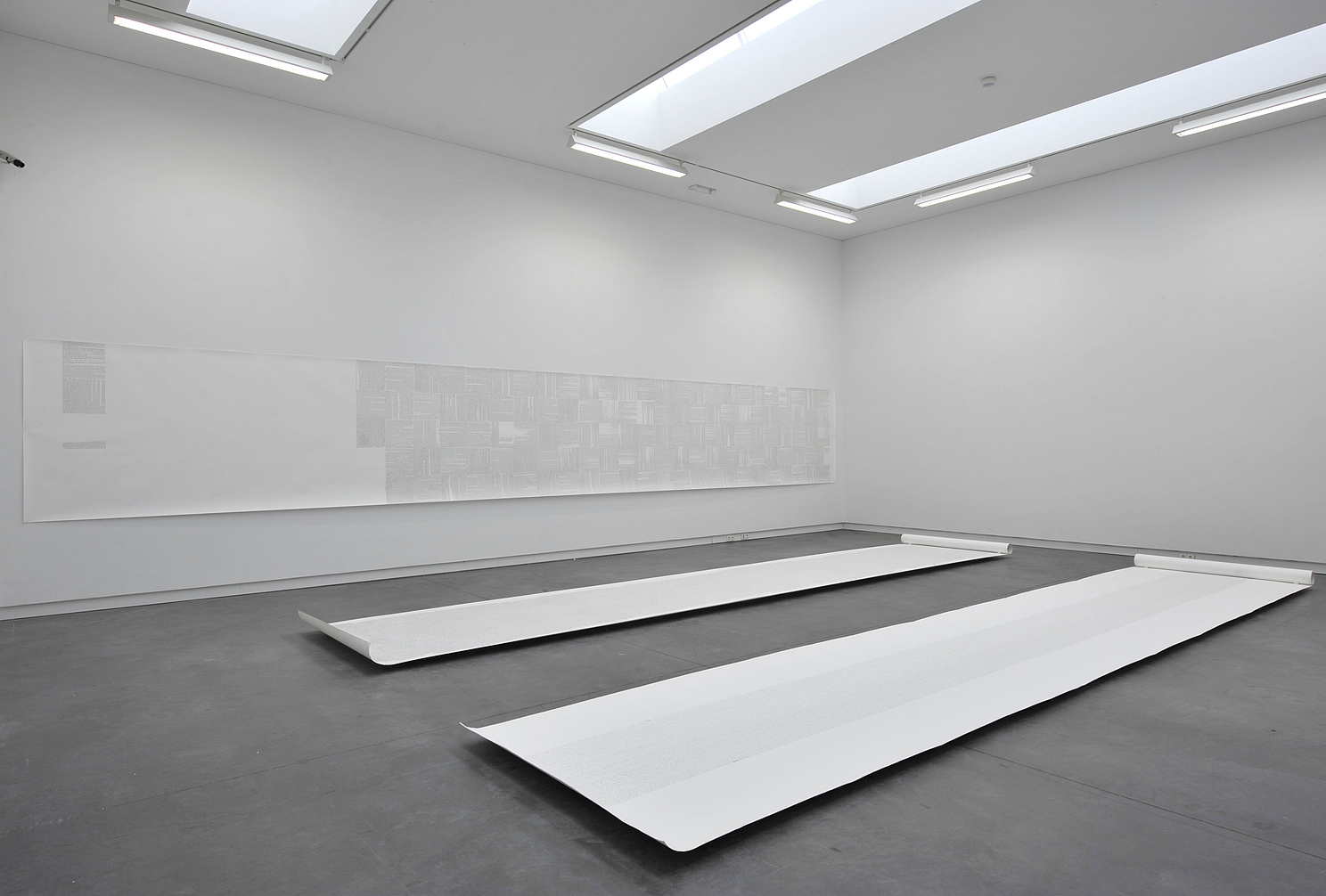Johan Kuipers
work on paper
23 January - 14 March 2010
Four large drawings from the past two years comprise the basis of an exhibition of work by Johan Kuipers (Sneek 1960) in the project space at De Pont Museum. Their dimensions far exceed those of an 'ordinary' drawing, yet this does not detract from a sense of intimacy. With pen and ink, Kuipers has drawn all over enormous sheets of paper measuring 1.5 x 10 meters, the length of an entire roll.
In For Whom the Bell Tolls, his drawing has an intricate, cell-shaped structure. Both in terms of technique and structure, the drawing displays a great similarity to his abstract paintings. The subtle fields of color in Kuipers's paintings have their own dynamic and stratified quality. They invite us to observe them from a close perspective, and that's when a play of countless individual segments of lines begins to develop. In the drawing, too, there is a certain chemistry and tension between the detail and the whole. Small variations in tone and line execution draw the eye to individual cells that collectively take possession of the enormous white surface. In the other drawings, this abstract structure of fine lines has given way to handwriting. Here the main focus is an interaction of language and image. With each work Kuipers has used the text of a complete book as the point of departure: Multatuli's Max Havelaar, Nabokov's Lolita and, from the Bible, the Book of Job. It is no coincidence that the refusal to conform to prevailing morals is a central theme in all of these books. Kuipers is fascinated by the resistance of the individual who never yields to the awareness that his rebellion is doomed to fail.
By writing out the texts in his own hand, Kuipers returns to the origins of the manuscript. At the same time, the drawings undermine the reading process. Here the content of the text, which gradually unfolds as we read, surrenders to the immediacy of the visual image. The rhythm and arrangement of the text segments lend a distinct beauty to the lengthy pattern. With each drawing a different principle of order is used; each 'book' has its own unique image. In Max the rows of upright and reclining segments give rise to an organized, rythmic pattern. Lo is based on a more irregular construction. Nabokov's famous novel begins in the middle of the page. The segments of text rotate around that point and fill the pictorial space in a meandering movement to the right and to the left. In Job the text from the Old Testament has taken the shape of a litany. Within a subtle weave, the words become strung into sentences which have the length of the roll of paper; they then head back in the opposite direction, to the beginning.
These drawings are not only the result of a consistently executed concept. The image is determined just as much by coincidental aspects of the execution: the differences in tone, caused by the pressure of the hand and the penpoint's degree of wear; an unanticipated blotch or smudge; the residual space left after the completion of the text. In those 'irregularities' the act of drawing and the enormous amount of time spent on this become even more palpable. To Johan Kuipers, the making of art has nothing to do with a fast gesture aimed at effect, but everything to do with the power of an ever-recurrent act. It is not the nature of the act but the persistance, the concentration with which it is carried out that determines its connotation and beauty. Because of their exceptional size, the works shown here both symbolize and embody that artistic belief.
